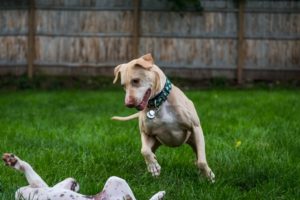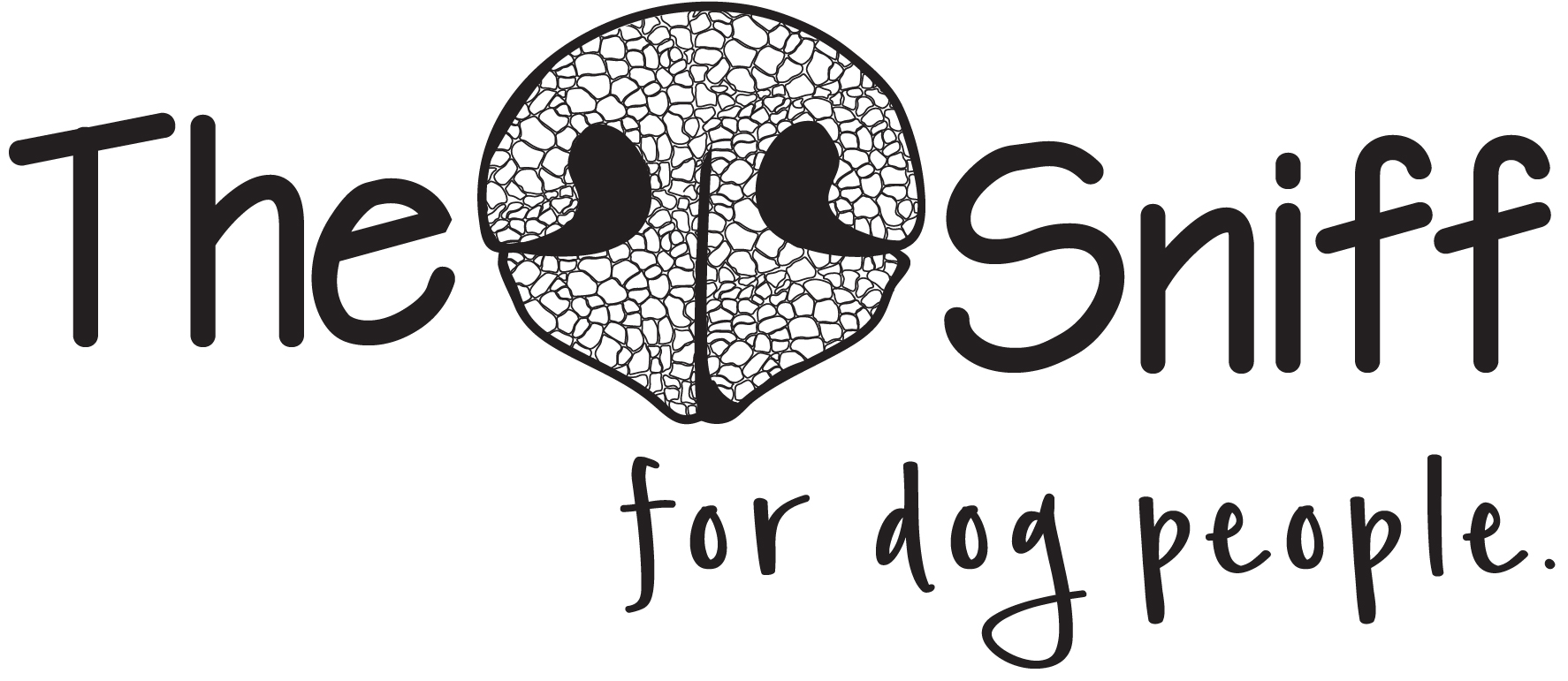How many of us have seen a dog somewhere, or doing something and thought to ourselves, “man, I wish my dog could do that.” Don’t know what I’m talking about? Or don’t want to admit it? (Don’t worry, I won’t tell your dog!)
 Here, I’ll start with a few examples to break the ice:
Here, I’ll start with a few examples to break the ice:
- A blissfully happy dog at the dog park, playing with all of the other dogs there without a care in the world.
- A dog relaxing at his person’s feet at a city cafe with outdoor seating, hardly blinking at the chaos on the sidewalk around him.
- A dog at his house during a party his family is hosting, cool as a cucumber and unfazed by all of the food and merriment around him.
- An athletic dog running with his human companion, perfectly keeping pace without stopping to sniff or veering off course to chase a squirrel.
- (A biggie for me): dogs and cats snuggling together, bathing each other, and just generally loving each other’s company and companionship.
So yeah — it’s true. I’ve checked out dogs other than my own over the years. I’ve even gone so far as to feel a little pang of jealousy sometimes. (Only sometimes!) But you know what? I’ve never gone so far as to come home and push the envelope with my own dogs and put them in situations where I know they will be stressed and anxious.
Our job, as dog people, is to put our dogs in situations where they will succeed. Or, at the very least, avoid putting them in situations where we know they will fail.
What that means is that if you are walking by the dog park with your dog (a place where he has been stressed or gotten into scuffles with other dogs in the past) and you see a group of your friends chatting and having a grand old time while their dogs romp, you don’t go into the dog park. Or, if your dog is petrified of thunderstorms, you don’t decide to take him to the 4th of July fireworks display because you don’t want to leave him at home. Or (a situation I actually failed at recently) if you want to introduce your dog to a new dog and you decide to just “see what happens” rather than staying firm about setting up a structured meet and greet that always works for him.
We must measure our dogs’ comfort level by what they communicate to us. Not by what we want them to communicate to us.
Now, this is not to say that training with a good trainer or behaviorist can’t help you counter condition your dog to certain situations. Of course some behaviors can be modified and skills taught so that certain dogs become more accustomed to and comfortable in certain situations — perhaps one that is necessary for the dog’s safety or well-being, like riding in the car or getting in a carrier. (Now that is a whole other blog post!) But, every dog has his limits, and those limits need to be respected despite societal expectations. Just like people, not every dog is going to thrive or love every situation that his family finds themselves in.
For multi-dog households, this gets a bit more complicated. Take our family, for example. Mama Julep, the foster dog turned permanent family member as of last month, is very, very different than our first dog, Beau. Whereas Beau is sensitive and routine-oriented, Julep is flexible and up for anything. He is cautious around new people and bonds fiercely to just a few, whereas she has never met a stranger and sometimes I wonder if we’re really her favorites. Beau is reactive to dogs when on-leash but an expert player off; Mama Julep loves to greet dogs on leash but her play style can be a bit bizarre. He is independent and has never had any issues being left alone, but she must always be in the company of someone (usually Beau) or she exhibits separation anxiety. The list goes on and on.
 In large part, it was these complimentary differences that sealed the deal for our adopting Mama Julep, but as we become accustomed to life as a two (sometimes three) dog household, we’re realizing that there is a learning curve when it comes to setting our very different dogs up for success. This has meant taking Julep on some excursions where she has a blast, and leaving Beau to sleep peacefully where he is comfortable and happy. Or, allowing them each to play with our foster puppies individually so neither of them feels left out.
In large part, it was these complimentary differences that sealed the deal for our adopting Mama Julep, but as we become accustomed to life as a two (sometimes three) dog household, we’re realizing that there is a learning curve when it comes to setting our very different dogs up for success. This has meant taking Julep on some excursions where she has a blast, and leaving Beau to sleep peacefully where he is comfortable and happy. Or, allowing them each to play with our foster puppies individually so neither of them feels left out.
So next time you see that “perfect dog” somewhere or doing something that just isn’t up your dog’s alley, pat yourself on the back for setting your dog up for success. If he spoke human, I’m sure your dog would thank you, too.

Leave a Reply